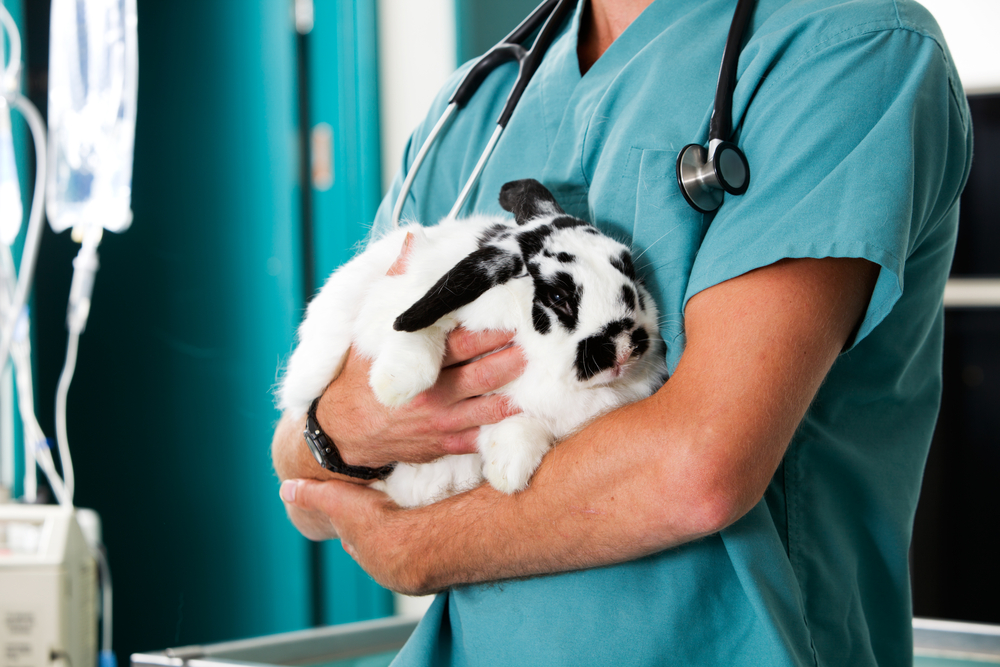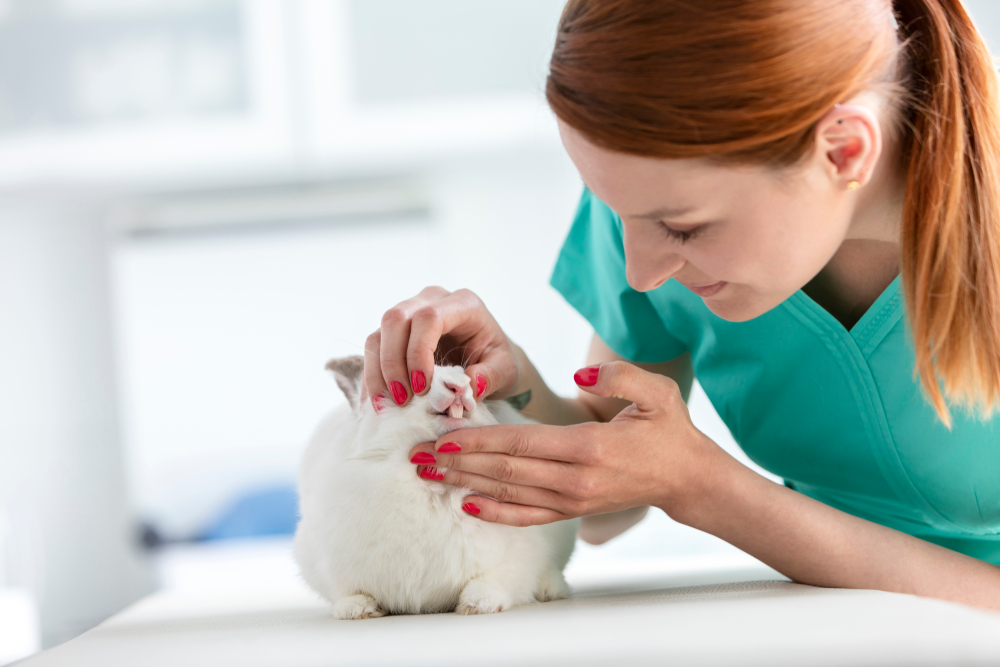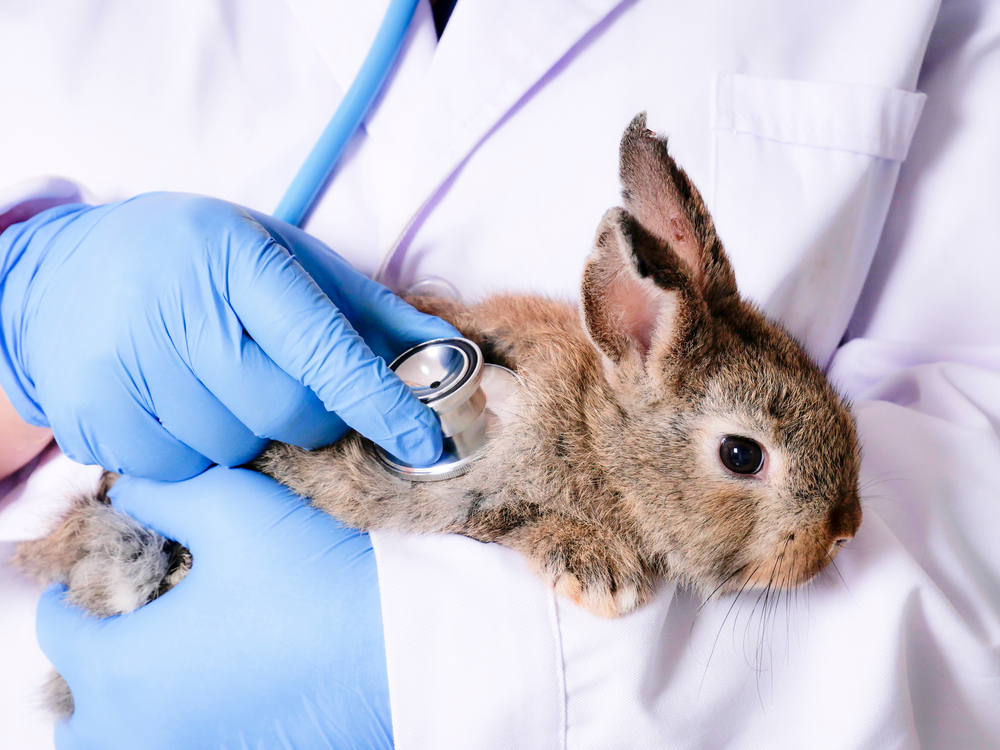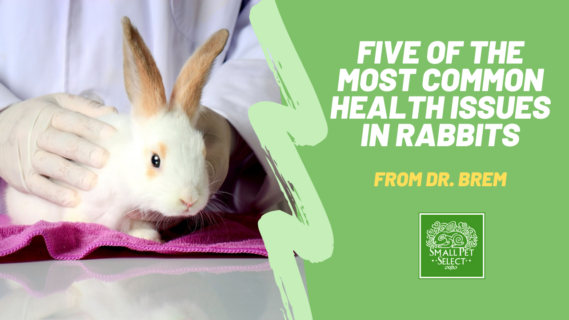Hi, all! Today I’m going to be talking about some of the most common health issues in rabbits. There are definitely a lot more health issues that affect rabbits, so a part 2 may be in the works later.
Gastrointestinal (GI) stasis
GI stasis is a condition in which the stomach and/or intestinal system is not moving along as it should. It is sometimes mistaken for gas, in that the rabbit seems painful or uncomfortable and isn’t eating or pooping much, but GI stasis is a life-threatening emergency.
What Causes It
Not enough fiber, either from an inappropriate diet or from anorexia caused by stress, is what causes GI stasis.
Fiber promotes intestinal movement, and rabbits need to eat fiber, in the form of grass hay (Timothy hay, orchard grass, meadow grass), constantly in order to maintain this intestinal movement.
One reason this is important is that when rabbits groom themselves, they ingest hair. Since rabbits can’t vomit, as cats do to expel hair, they need plenty of fiber to keep the GI system moving the hair through.
Otherwise, hair can accumulate (sometimes called a hairball, although this term isn’t accurate). This causes pain, which causes more stress and makes the rabbit not want to eat, which makes the problem even worse.
In addition, diets low in hay and high in carbohydrates (including sugar) lead to a decrease in the “good” bacteria in the GI system, which leads to decreased intestinal movement.
How It’s Diagnosed
An owner often notices less of an appetite, fewer and darker fecal pellets, pain sounds, and the rabbit not acting itself. A sign of other health issues in rabbits as well!
On exam, a veterinarian can note a hard, “doughy” stomach, few feces in the colon, no stomach sounds, and dehydration. X-rays sometimes need to be taken to distinguish GI stasis from a blockage or gas.

How It’s Treated
A veterinarian will administer fluids and provide pain medication and possibly a medication to promote intestinal movement. Infant gas drops won’t help like they will if the problem is gas.
Making sure the rabbit eats is also important, especially since eating promotes movement, so your vet may recommend syringe feeding and show you how to do it.
Important: If the rabbit’s stomach is full of stuck food, you should not syringe feed until you know the stomach is moving again. Also, don’t give stomach lubricants meant for cats to rabbits.
Dental Disease
Dental disease can affect the incisors (front teeth) or cheek teeth of rabbits and can cause ulcers on the tongue or cheek and abscesses from teeth invading the jaw bone. It can be painful, and rabbits may not eat or eat only softer food.

What Causes It
Rabbit teeth continue to grow throughout a rabbit’s life. Because of this, they need to be worn down to keep them from overgrowing or growing in weird directions - one of the most common health issues in rabbits without a proper diet!
This is accomplished for the most part by rabbits eating grass hay (not alfalfa). So, the most common reason rabbits develop dental disease is by not being provided an adequate amount of grass hay.
Other causes include trauma to the head or face or genetics. For example, in lop and dwarf breeds, whose faces are shorter, crowding of teeth can occur, which can lead to them growing incorrectly.
How It’s Diagnosed
An owner often notices drainage from the eyes or nose, decreased appetite, drooling, a bump on the cheek, or may notice the teeth themselves.
A veterinarian uses a tool called an otoscope or a speculum to inspect the cheeks, tongue, and cheek teeth. This is best done under sedation. X-rays may need to be done to check for tooth root abscesses.
How It’s Treated
The teeth need to be trimmed under anesthesia. Occasionally teeth may need to be pulled, especially if there is an abscess, but this needs to be done by a veterinarian with expertise in extracting rabbit teeth!
If there is an abscess, an antibiotic will be prescribed. A pain medication may also be prescribed, and if the rabbit is dehydrated, fluids will be administered. Usually, the rabbit will need to get its teeth trimmed for the rest of its life.
Important: Never trim a rabbit’s teeth by yourself with clippers! This can cause the tooth to break or split, which causes a lot of pain and other health issues in rabbits.
Upper Respiratory Infection
You may have heard of rabbit “snuffles.” Occasionally rabbits can have an allergy to something in the environment, but usually, if a rabbit is sneezing, shaking its head, or constantly cleaning its nose and eyes, an upper respiratory infection is the issue.

What Causes It
The usual culprit is the bacterium Pasteurella multocida, which is why the correct term for snuffles is “pasteurellosis.”
How It’s Diagnosed
Owners hear sneezing, and they notice drainage from the nose, often discharge from the eyes, and sometimes fur loss around the eyes, redness of the eyes, and “crunchy” fur on the front paws.
Veterinarians perform an exam, listen to the respiratory tract, and may take X-rays to make sure the problem isn’t a tooth root or the sinus bones. To confirm the diagnosis, a vet performs a nasal swab or blood test.
How It’s Treated
An oral antibiotic that is meant to treat pasteurellosis is prescribed, and if the eyes are affected an antibiotic eye drop is too. Often pasteurellosis will need to be treated every once in a while for life.
Encephalitozoonosis
Encephalitozoonosis affects mostly the brain, eyes, and kidneys of rabbits. About half of all pet rabbits have been or will be infected at some time in their lives.
What Causes It
A type of microscopic fungus called Encephalitozoon cuniculi, or E. cuniculi for short, spreads to rabbits through rabbit urine.
How It’s Diagnosed
Owners might notice tilting of the head, circling, falling down, eyes moving back and forth, and trouble walking. If it has affected the brain; a white area in the middle of an eye if it has affected the eye; and excess drinking and urinating if it has affected the kidneys.
A vet diagnoses it through a neurological exam to make sure the problems aren’t being caused by something else and through blood tests. However, usually, if the rabbit is displaying signs, a vet will go ahead and treat it even without the blood tests.
How It’s Treated
As of now, there’s not a cure, but if the rabbit has the brain form of the disease a particular antiparasitic treatment can help.
A vet may recommend that any rabbit friends are also treated for prevention. Health issues in rabbits can spread quickly among groups of rabbits. If the rabbit has the eye form the eye may need to be removed.
Obesity
Obesity can strain the heart and lungs, can make any arthritis worse and more painful, can lead to infected sores on the feet, and can lead to mineral deposits (“sludge”) in the bladder.
Rabbits also cannot clean themselves as well as they should when they are overweight.
What Causes It:
Too much food and not enough exercise are almost always the reasons!
How It’s Diagnosed
Owners can get an idea of if their rabbits are overweight by petting them; they should be able to easily feel the rabbit’s ribs. Vets determine obesity by feeling a rabbit’s layers of skin and fat, feeling for its ribs, and judging its “body condition score.”
How It’s Treated
Ensuring the rabbit gets lots of exercise or “out-of-cage” time is the first way.
Feeding a healthy diet, of course, is the second way. Seeds, yogurt drops, cereal, and dried fruit have way too much sugar and starch for a rabbit. Only 5% of a rabbit’s diet should consist of treats, and those treats should consist of fiber and fresh fruit.
A lot of health issues in rabbits can be prevented with a proper diet and plenty of play time!
Copyright 2024 Amy “Brem” Bremers, DVM





